Of Summer Sport offered to Scots boys, Rowing remains a popular choice since its introduction to The Scots College over a century ago.
The infrastructure needed for a school to host a rowing program comes at a significant cost and requires expensive waterfront property. The fact that Scots is blessed with two boatsheds places the College in a unique position among schools in Sydney.
Competitive rowing had its genesis on Sydney Harbour in the early 19th century, when crews from visiting ships would compete in match races, rowed in ‘ship’s boats’.
The first recorded event was organised by Captain John Piper in 1818; the course running from Bradley’s Head to Sydney Cove to win a ‘considerable sum’.
Development through the century saw recreational rowing clubs established on the foreshore, with early competitions held on open water harbour courses.
Rowing, along with Athletics, Cricket and Rugby, were the foundation sports for the fledgling Athletic Association of the Great Public Schools (AAGPS), which Scots had joined at the inaugural meeting in 1892.
The College’s Rowing program can be dated back to 1915 when the first crew entered the AAGPS regatta, competing in the 1st IV race for the Yaralla Cup on the Parramatta River. This four-oared contest was the premier event when AAGPS rowing commenced in 1893, but was usurped by the introduction of eights competing for the Major Rennie Trophy in 1910.
It is unclear how the first Scots crew performed, but the sport continued to develop, and the College established its first boatshed in 1925 on reclaimed land on the waterfront in Rose Bay. At that time, Sydney Grammar School and Shore maintained boatsheds on the Harbour in Berrys Bay, while some schoolboys rowed out of the Sydney Rowing Club shed in Woolloomooloo Bay.
College funds were limited and, demonstrating an early adoption of sustainable practice, the Rose Bay
Boatshed was constructed using recycled timber weatherboards and windows from the College’s Dining Room on Victoria Road which, in turn, had been relocated from the College birthplace, the New Brighton Hotel, in 1895.
The Rose Bay Boatshed remained in use until a letter was received from the then Minister for Defence, Mr Harold Thorby, in December 1937, prohibiting the College from being granted a lease renewal, owing to the intention of the Commonwealth to develop the area into a flying- boat base. By this time harbour regattas had ceased due to increased activity from commercial craft, and competition had shifted to the upper reaches of the Parramatta River.
In 1936, the College purchased land on the northern side of the championship course on the Parramatta River at Gladesville.
This boatshed had everything: easy access to good water for training and racing, a wide waterfront apron for two pontoons, facilities and a clubroom for overnight rowing camps accommodating 20 boys, and road access.
Over the years, the College, in contrast to all the other AAGPS schools, made the decision to retain the timber sheds and hence the heritage of schoolboy rowing in Sydney. The Gladesville Boatshed, though extended over the years, has been developed in a way that maintains the character of the traditional timber boathouse with a clubhouse above the boat storage area, a timber deck, ramp and pontoons; one of only two such boathouses now remaining on the river. Other schools, having also relocated west, in turn surrendered their harbour boatsheds. Scots however, despite being evicted from Rose Bay, decided that a harbour boatshed, convenient to the College, was essential and promptly sought a lease on a site on the Double Bay waterfront.
Despite an objection from a resident, the College was successful in gaining a lease of premises at the foot of what was then Wharf Road (Wingadal Place) and the shed opened in 1939.
The Australian cedar clapboards from Brighton, replete with graffiti and carved signatures, found themselves once again reconstituted into a handsome boatshed, which remains unaltered, well maintained and for years was the ‘junior shed’.
An unnamed Old Boy of the early 1950s, who rowed in the 1st VIII, recalled when they would run down from the College for an early morning row, and boat from the Double Bay Boatshed, occasionally pacing a Matson liner, inbound on her way from San Francisco to berth in Woolloomooloo Bay.






